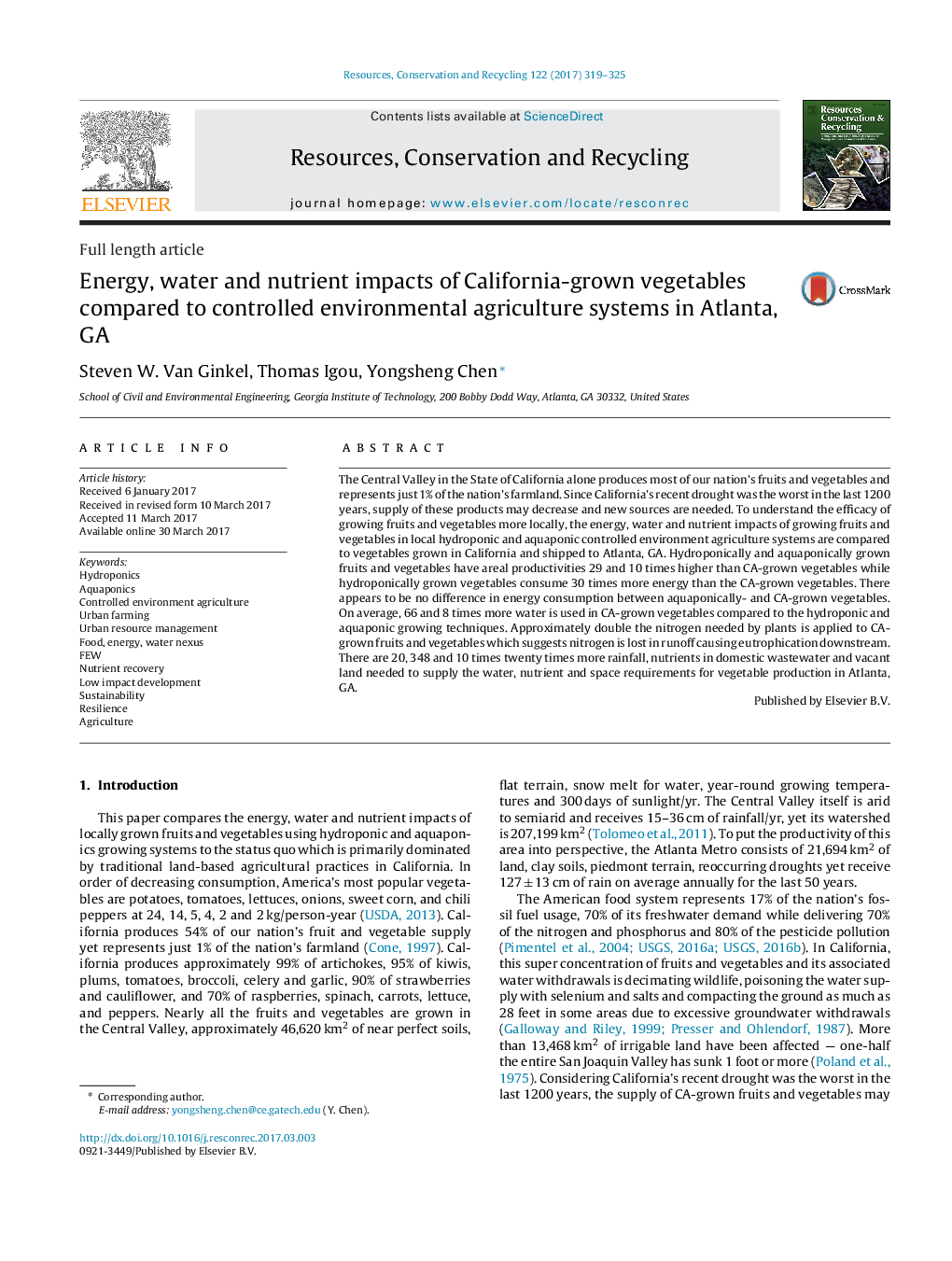| Article ID | Journal | Published Year | Pages | File Type |
|---|---|---|---|---|
| 5118801 | Resources, Conservation and Recycling | 2017 | 7 Pages |
â¢Hydro- and aquaponic vegetables have areal productivities 29 and 10 times higher than CA-grown vegetables.â¢Hydroponic vegetables consume 30 times more energy than CA-grown, but no difference in energy consumption between aquaponic and CA-grown.â¢CA-grown vegetables consumed 66 and 8 times more water compared to the hydroponic and aquaponic growing techniques.â¢Based on aquaponic vegetable nutrient balance, approximately twice the necessary nitrogen fertilizer is applied to CA-grown vegetables.â¢There is enough water in rainfall, nutrients in domestic wastewater and vacant land to supply all of Atlanta's vegetable demand locally.
The Central Valley in the State of California alone produces most of our nation's fruits and vegetables and represents just 1% of the nation's farmland. Since California's recent drought was the worst in the last 1200 years, supply of these products may decrease and new sources are needed. To understand the efficacy of growing fruits and vegetables more locally, the energy, water and nutrient impacts of growing fruits and vegetables in local hydroponic and aquaponic controlled environment agriculture systems are compared to vegetables grown in California and shipped to Atlanta, GA. Hydroponically and aquaponically grown fruits and vegetables have areal productivities 29 and 10 times higher than CA-grown vegetables while hydroponically grown vegetables consume 30 times more energy than the CA-grown vegetables. There appears to be no difference in energy consumption between aquaponically- and CA-grown vegetables. On average, 66 and 8 times more water is used in CA-grown vegetables compared to the hydroponic and aquaponic growing techniques. Approximately double the nitrogen needed by plants is applied to CA-grown fruits and vegetables which suggests nitrogen is lost in runoff causing eutrophication downstream. There are 20, 348 and 10 times twenty times more rainfall, nutrients in domestic wastewater and vacant land needed to supply the water, nutrient and space requirements for vegetable production in Atlanta, GA.
